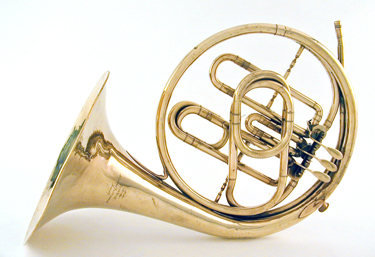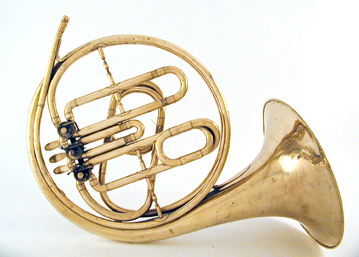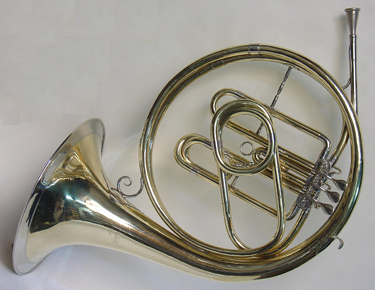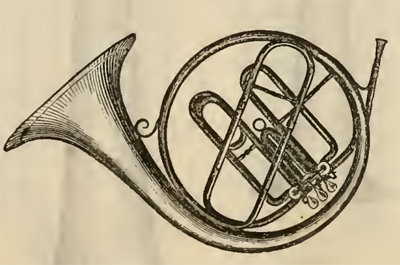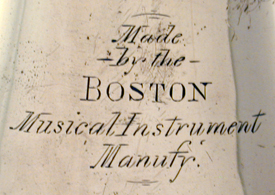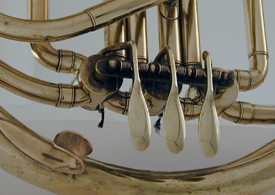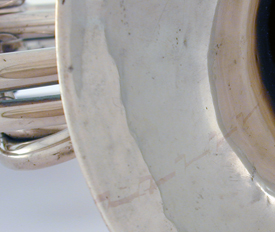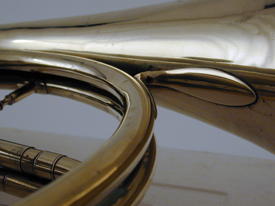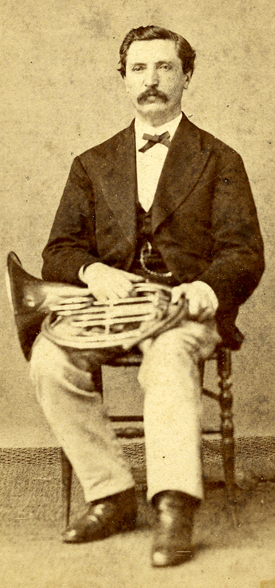The horn pictured above
was made by the
Boston Musical
Instrument Manufactory
following a design attributed to
Elbridge
G. Wright. In fact it is quite probable
that the design is due to, or certainly
influenced by Wright's partner,
Henry
Esbach since he no doubt brought
experience in horn making from his native
Germany. The example shown below by E.G.
Wright & Co. and the dated testimonials at
the bottom of this page show that this horn
design predates the founding of Boston Musical
Instruments Manufactory.
This design features a very long slow-tapered
leadpipe extending from the mouth piece around
the entire circumference of the corpus to the
first valve. The main tuning slide comes after
the valve set and is placed on the front of
the horn. The tuning slide on this example has
a loop not shown in the company's catalog
drawing (see below). The subject horn is
made entirely of brass throughout, in contrast
with the original Wright & Co. horn shown
below which contains nickel-silver ferrules,
braces, and trim. Note also this horn has an
additional brace from the third valve casing
to the bell tail that is not shown in the
catalog drawing nor found on the Wright &
Co. horn.
The valve levers are mounted on the top of the
rotor casings and are cantilevered over to the
rotors to the opposite side. This is different
from the original Wright design (see below)
where linkage to the rotor is on the outside
in the typical manner.
The bell tail and flare has a clearly visible
continuous single "zipper" seam (photo at
right) in contrast to contemporary
European-made horns that often had a
vee-gussett inserted. Unlike the original
Wright design as shown below, this horn does
not have a bell garland .
The bell brace differs from those on the
Wright horn and other examples from BMIM and
may be an indication of the horn's date of
manufacture. This horn does no have a serial
number which dates it to before circa 1880
when BMIM began numbering its
instruments.
Overall the horn is in excellent condition
having no patches and showing no other
evidence of repairs. The valves remain very
tight, indicating the horn has not had much
use, certainly not professionally. As a result
it has a full range from pedal to high C, and
excellent relative intonation throughout at
all volumes without "edging out." The very
long leadpipe gives a beautiful tone and the
wide bell throat appears to eliminate any need
for a garland. It is pitched fairly high with
A=ca.448 with a moderate pull of the main
slide.
